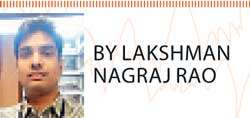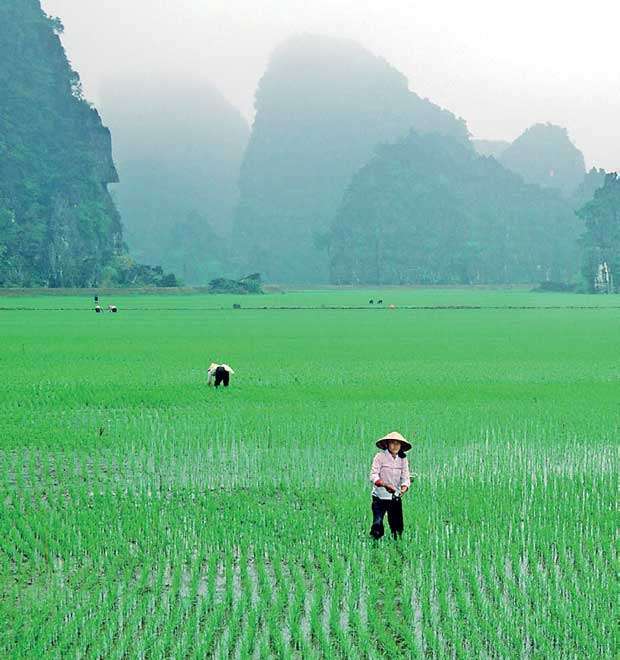04 May 2018 - {{hitsCtrl.values.hits}}
 Nearly 70 percent of the world’s poor live in rural areas and rely on agriculture for their livelihood. Target 2.3 of the Sustainable Development Goals (SDGs) aims to double the agricultural productivity and incomes of small-scale food producers by 2030.
Nearly 70 percent of the world’s poor live in rural areas and rely on agriculture for their livelihood. Target 2.3 of the Sustainable Development Goals (SDGs) aims to double the agricultural productivity and incomes of small-scale food producers by 2030.
Timely, cost-effective and high-quality crop statistics play an important role in the formulation of policies targeting poverty reduction, agricultural growth and the welfare of agricultural households. They are also central to monitor progress on achieving SDG 2.
Traditional methods for estimating crop yield involve collecting field data, through either administrative reporting systems or sample surveys. Both methods are time-consuming, expensive and results are unlikely to reach policymakers in time for planning purposes.
Remote sensing technology, on the other hand, holds a lot of promise for producing timely and accurate yield data, allowing for crop forecasting across space and time and under various agro-climatic conditions.
However, significant cloud coverage in many parts of the world, particularly Southeast Asia, limits the availability of cloud-free optical satellite images to serve as an alternative to field data. Obtaining higher resolution data (below 5m spatial resolution) is currently not cost-effective.
In a recently published Asian Development Bank working paper, we present an innovative way to improve both the spatial and temporal resolution of freely available satellite data, largely circumventing the cloud coverage issue and facilitating the preparation of a spatially explicit rice yield map. The study relies on a data fusion technique that combines two freely available sources of optical satellite data: Landsat and Moderate Resolution Imaging Spectroradiometer (MODIS).
Landsat is available at 30m spatial resolution, but only passes over our study area every 16 days (low temporal resolution). MODIS passes through our study area almost every day (high temporal resolution) but is available only at 250m spatial resolution.
Combining these two sources of data through a Spatial and Temporal Adaptive Reflectance Fusion Model allows us to exploit the spatial and temporal variation of the two datasets to produce a “fused” dataset with a higher spatial (30m) and temporal (daily) resolution.
The next step is to estimate the rice area for the province from the fused satellite images.
Our land cover classification uses a random forest classifier algorithm, which has been widely tested across multiple contexts. Our objective, however, is to get down to the yield level. This is slightly complicated because rice grains are hidden inside a shell that is not easy to detect using 30m resolution satellite data.
Luckily for us, we have ground data on rice yield, obtained through crop-cutting methods (the gold standard for yield measurement) at randomized locations across the province. We are also able to generate values for different types of vegetation indexes for each pixel in our images.
By linking the pixels to the random locations of the crop cutting sites, we can estimate the relationship between the peak values of vegetation indexes derived from the fusion data and yield estimates from the ground.
We find that the Normalized Difference Vegetation Index (NDVI) performs the best out of the three vegetation indices explored in this study. The other two are the Enhanced Vegetation Index (EVI) and Green Chlorophyll Vegetation Index. Interestingly, the relationship between NDVI and crop-cutting yield is the strongest for rice variety BC15 (R-squared value of 0.69).
The estimated relationship between NDVI and crop-cutting yield can now be utilized to produce a spatially explicit map of crop yield for Thai Binh. This is very useful for policymakers because it shows spatial patterns for rice yields at a very disaggregated level.
For example, the northern part of province seems to experience lower yields than other parts. Government agencies can use such maps to identify the causes for such patterns and target adequate resources more strategically to improve overall agricultural productivity.
All in all, our study shows that data fusion proves to be a viable approach to improve spatial and temporal resolution of satellite data, which can then be used for producing key agricultural statistics (rice yield in our case). The data used in this study are freely available and scalable to the national level.
However, this requires more strategic investments by governments in designing and testing customized online applications and support for further research and development to strengthen the relationship between crop yield and satellite-based vegetation indexes. The goal is to reach a point in time when national statistics offices (NSOs) don’t have to conduct expensive field surveys every year and rather use satellite-based indices.
That said, there are several caveats that NSOs and researchers must pay attention to while considering the use of satellite data for agricultural statistics.
First, more pilot testing and research is required to expand this work to other crops. Next, researchers are often interested in data on farm management practices for analysis, but satellite technology cannot (yet) provide such information. Finally, depending on the resolution of satellite images and classification algorithm implemented, measurement error may still be of concern, particularly for smaller farms.
Systematic studies that compare satellite-derived crop statistics with farmer self-reports across various contexts are needed to provide conclusive evidence on the feasibility of measuring yields from the sky.
(Lakshman Nagraj Rao is a Statistician at Economics Research and Regional Cooperation Department of the Asian Development Bank)

18 Nov 2024 1 hours ago
18 Nov 2024 1 hours ago
18 Nov 2024 2 hours ago
18 Nov 2024 6 hours ago
18 Nov 2024 7 hours ago